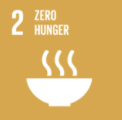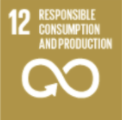Standards & BlueTech Alignment
| Student Action / Outreach | Students hold a poetry reading to raise awareness of the power of kelp forests. |
| Career Connection | Aquaculture Farmer |
| Blue Tech Alignment / Ocean Literacy Principles (OLP) | OLP 5: The ocean supports a great diversity of life and ecosystems. (K-2)
OLP 6: The Ocean and humans are inextricably interconnected. (K-2) |
| Water Issue(s) Addressed | Conservation, Sustainable Agriculture, Consumption |
| Next Generation Science Standards (NGSS) | 1-LS1-1 Use materials to design a solution to a human problem by mimicking how plants use their external parts to help them survive, grow, and meet their needs.
1-LS3-1 Make observations to construct an evidence-based account that young plants and animals are like, but not exactly like, their parents. |
| Sustainable Development Goals (SDG) |    |
| Literacy Standards | Language
Distinguish shades of meaning among verbs differing in manner (e.g., look, peek, glance, stare, glare, scowl) and adjectives differing in intensity (e.g., large, gigantic) by defining or choosing them or by acting out the meanings. Reading literature Identify words and phrases in stories or poems that suggest feelings or appeal to the senses. With prompting and support, read prose and poetry of appropriate complexity for grade 1. Reading Informational text Use the illustrations and details in a text to describe its key ideas. With prompting and support, read informational texts appropriately complex for grade 1. Writing With guidance and support from adults, focus on a topic, respond to questions and suggestions from peers, and add details to strengthen writing as needed. |
Progression of Modules
| Module 1
Inquiry Launch |
Module 2
Inquiry Deep Dive Research: What is the relationship among animals in the kelp forest? |
Module 3
Hands-on Investigation Research: How do humans use the kelp forest? What are the health benefits of kelp? |
Module 4
Career Connection Meet an offshore aquaculture farmer |
| Module 5
Engineering & Design Engineering challenge: Protect a plant |
Module 6
Student Action Create poetry eBook and Awareness Campaign |
Module 7
Reflection & Assessment |
Module 8
Exhibition and Reflection |
Overview
The purpose of Module 1 is to spark student wonderings and have students ask questions relating to the phenomenon of the coastal seas, with an emphasis on the kelp forest. Students build on their prior knowledge of kelp and kelp forests, and begin sense-making around the phenomenon.
Launch the Anchoring Phenomenon
This is a long video, so watching in segments across the week is suggested. Varied underwater coastal habitats are featured, beginning with marine meadow, then on to coral reefs, California kelp forests, Alaskan coastal waters, the South American coast, and the islands of Raja Ampat in Southeast Asia. Segmenting by the habitats would be supportive.
With each segment, offer students time to talk, and begin capturing their noticings and questions on a chart. Watch the segment a second time, and focus on the relationships between the living creatures.
Discuss the relationships between the living creatures in each habitat, noticing the interdependence of the animals. Create a chart titled “Marine Habitats”, and begin recording the varied marine habitats, along with the marine animals that live there, other learning and questions.
Engage
Introduce the Question to Investigate: What is special about the kelp forest habitat?
Read Aloud
In this unit, students will be reading a mix of nonfiction and realistic fiction focused on the rich variety of animal, plant and algae life in the kelp forest. They will gain factual knowledge from the nonfiction as they strengthen their understanding about habitats and food webs. This knowledge will be expanded as students construct a deeper understanding of the beauty of the uniqueness of each animal in the habitat, and focus their inquiry on specific favorites.
Read aloud books about one or varied marine habitats, starting with:
The Hidden Forest by Jeannie Baker
Identify the big ideas about the kelp forest the author is conveying, and the words or phrases that support the ideas and help readers understand the look and feel of the habitat(s). Encourage students to notice more, ask more questions, and add to the Ocean Habitat chart.
Shared and Small Group Reading
Recommendations for leveled and First Grade NGSS-aligned texts for shared and small group reading are included in the Blue Tech materials matrix. Shared reading instruction for this unit should include:
Additionally, shared and small group reading should include focus points specific to the nonfiction genre. This genre specific instruction will support children’s meaning making as they delve deeply into meaning making in both read aloud and independent reading. Focus points for nonfiction genre shared and small group reading in first Grade may include any focus points included in the previous grade level which require added support, and:
Independent Reading
Gather a collection of visually appealing fiction and nonfiction texts about marine animals and habitats in a range of levels and perspectives. If possible, include texts about kelp forests and the animals that live in these habitats, such as sea otters, sea horses, dolphins, seals, etc. Allow students independent time to explore and read with their questions in mind, ask more questions, and construct understanding. Encourage children to use their inquiry notebooks to draw or jot ideas or information they find compelling.
Explore
Students dive into an aspect of the kelp forest habitat that interests them, such as the kelp or seaweed, or a particular marine animal. They make observations and create an observational drawing of the aspect of the kelp forest that is most intriguing to them in their inquiry notebooks. Invite students to spend time noticing one thing, and pay attention to the details. Encourage them to incorporate the details into their drawing.
Explain
Writing Workshop
Children will be writing poetry as a persuasive tool in this unit. Launch the work by reading poetry about marine animals and habitats, such as:
Gulper Eel by Kate Coombs
Slickety Quick: Poems About Sharks by Skila Brown
At the Sea Floor Café: Odd Ocean Critter Poems by Leslie Bulion, illustrated by Leslie Evans
In the Sea by David Elliot
Notice what the poets choose to write about, and how these poems make readers feel about the animals and habitats. Invite the children to begin gathering ideas for their own poetry about marine animals and habitats.
Encourage children to jot their ideas, and share them with partners. Make the poetry texts available to them so they can reread their favorite poems. Begin to notice aspects of poems, such as titles, sparsity of words, interesting ways the words and lines are arranged, etc.
Elaborate
Invite students to draw an initial model of a kelp forest habitat in their inquiry notebooks.
Prompts for the model can include:
Notice whether students consider the whole of the habitat – plants, marine animals, ocean floor, a sense of depth of the ocean, providing space for the long upward growth of the kelp, etc. Hold on to these initial drawings for comparison at the conclusion of the unit.
Reflect
Return to the Question to Investigate: What is special about the kelp forest habitat?
Have students share their responses to the question.
Guide students in completing the Phenomena Board as a class by scribing what they share back about what they did and what they figured. Help students make a connection from their learning in this module back to the Anchor Phenomenon. Below is a teacher example of what students might say:
| Investigative Phenomenon | Question to investigate | What we did | What we figured out | Connections to the phenomenon | Questions we still have |
| Our Planet: Coastal Seas
The kelp forest is a special habitat that supports different animals. |
What is special about the kelp forest habitat? | We watched videos. We read The Hidden Forest. We did an observational drawing of kelp forest. We read poetry. We made an initial model of a kelp forest. | Kelp forests are huge, underwater forests in the ocean. They are home to marine animals. Kelp is important to humans too. | There are many different ocean environments that are home to plants and animals. | Complete with students. |
Copyright © 2023 TMA BlueTech
| Cookie | Duration | Description |
|---|---|---|
| cookielawinfo-checkbox-analytics | 11 months | This cookie is set by GDPR Cookie Consent plugin. The cookie is used to store the user consent for the cookies in the category "Analytics". |
| cookielawinfo-checkbox-functional | 11 months | The cookie is set by GDPR cookie consent to record the user consent for the cookies in the category "Functional". |
| cookielawinfo-checkbox-necessary | 11 months | This cookie is set by GDPR Cookie Consent plugin. The cookies is used to store the user consent for the cookies in the category "Necessary". |
| cookielawinfo-checkbox-others | 11 months | This cookie is set by GDPR Cookie Consent plugin. The cookie is used to store the user consent for the cookies in the category "Other. |
| cookielawinfo-checkbox-performance | 11 months | This cookie is set by GDPR Cookie Consent plugin. The cookie is used to store the user consent for the cookies in the category "Performance". |
| viewed_cookie_policy | 11 months | The cookie is set by the GDPR Cookie Consent plugin and is used to store whether or not user has consented to the use of cookies. It does not store any personal data. |